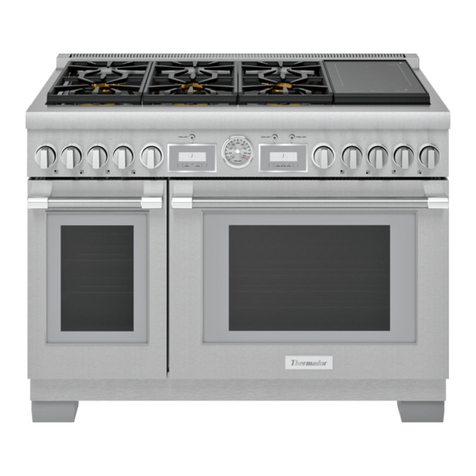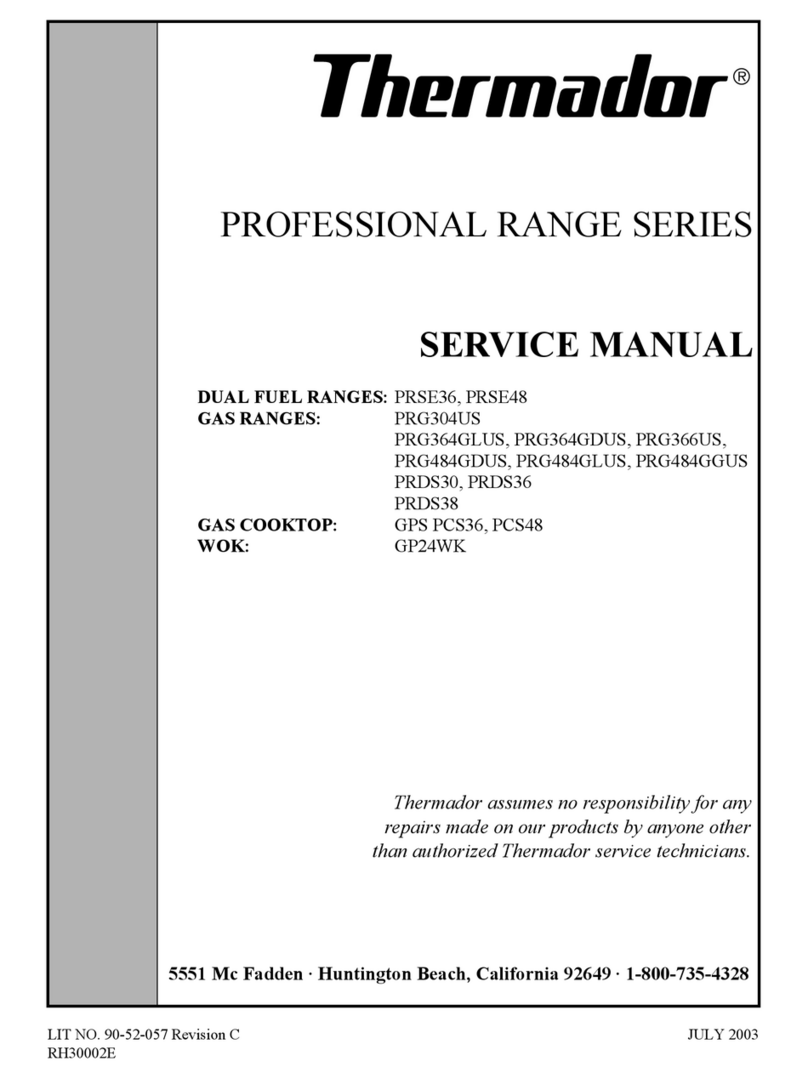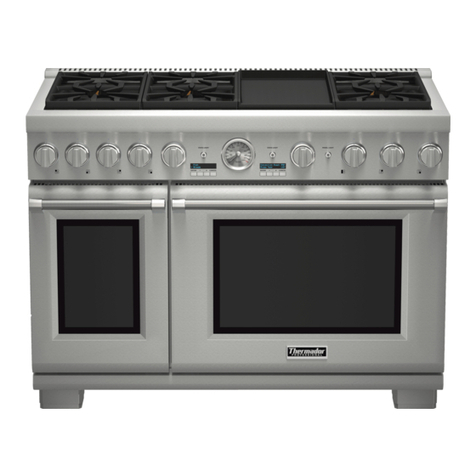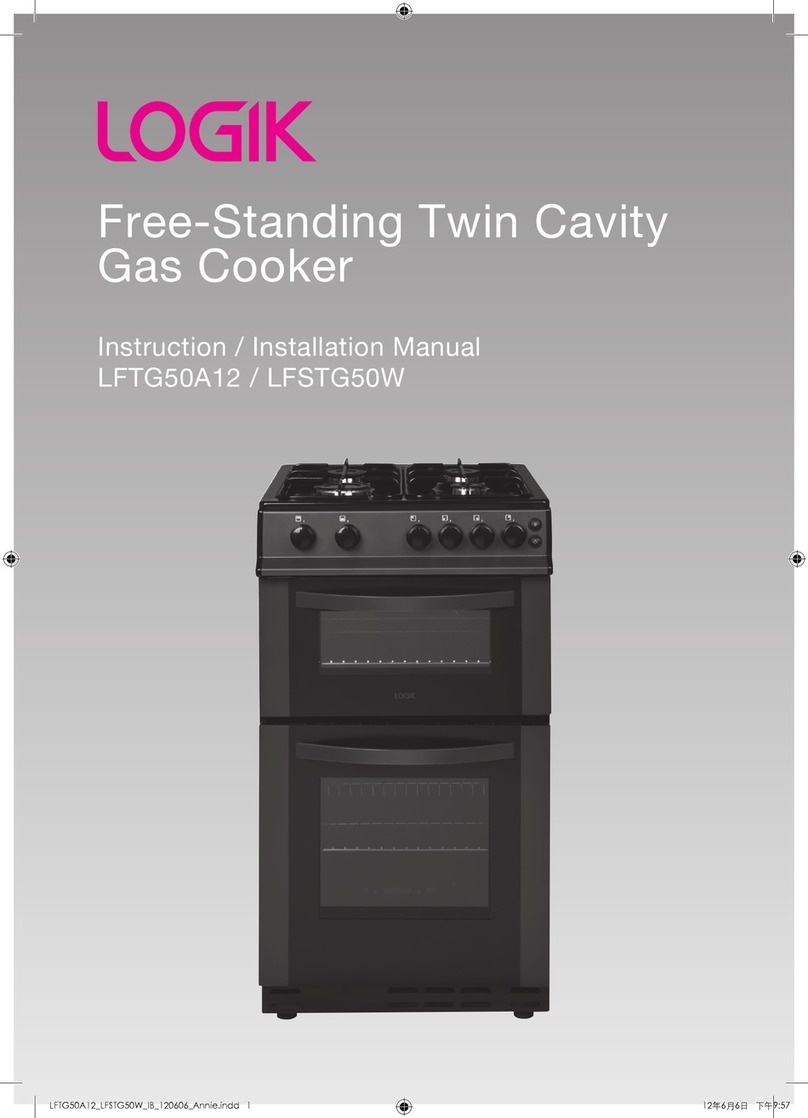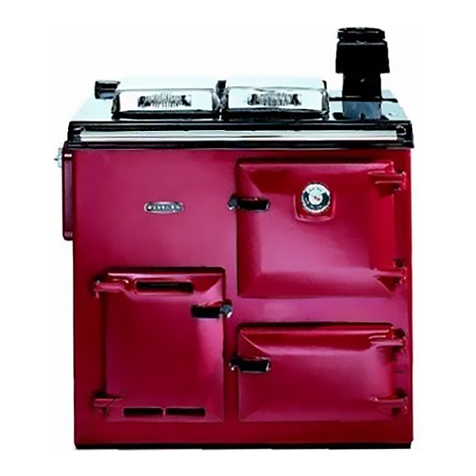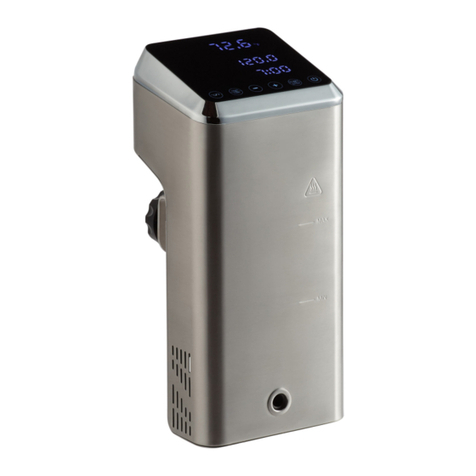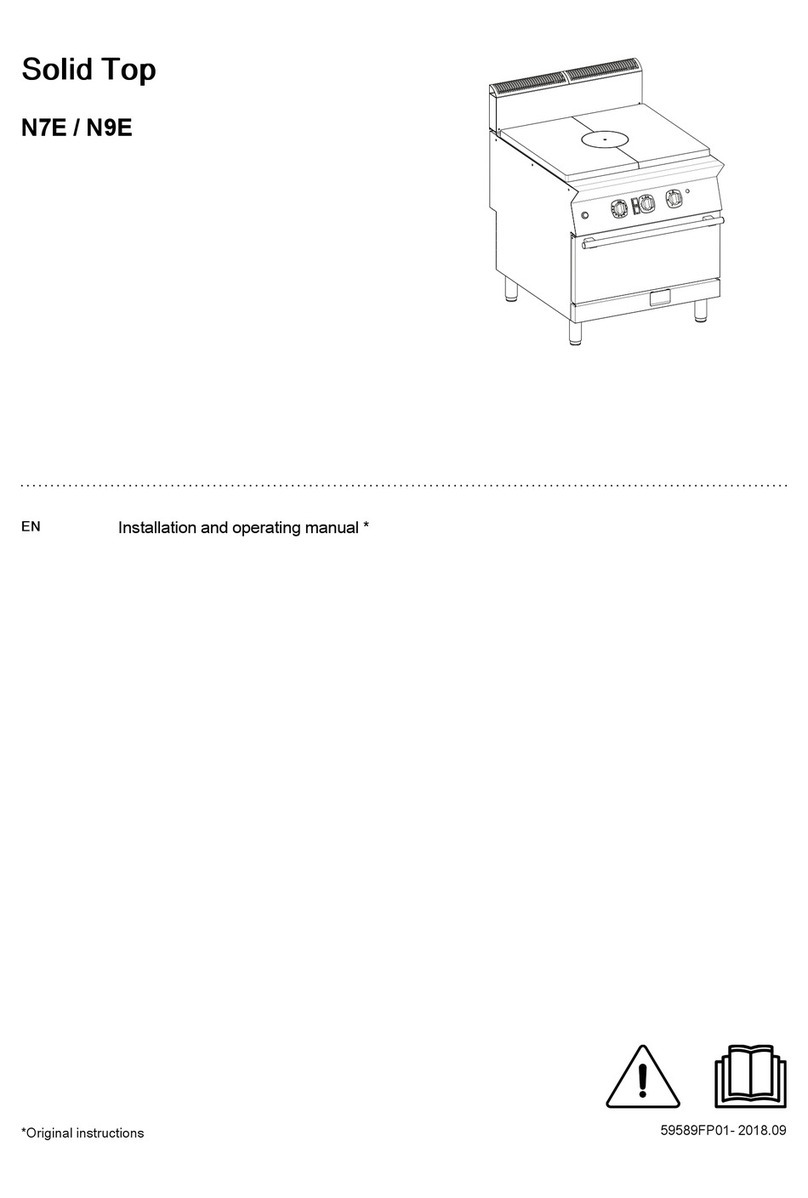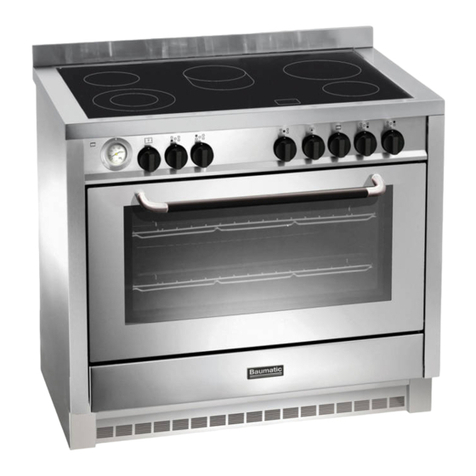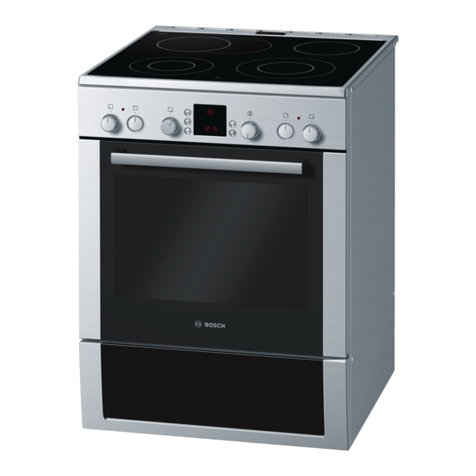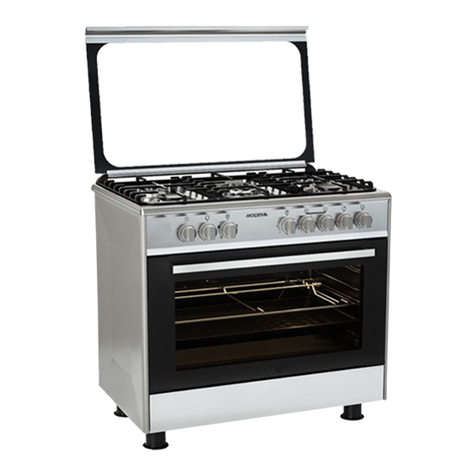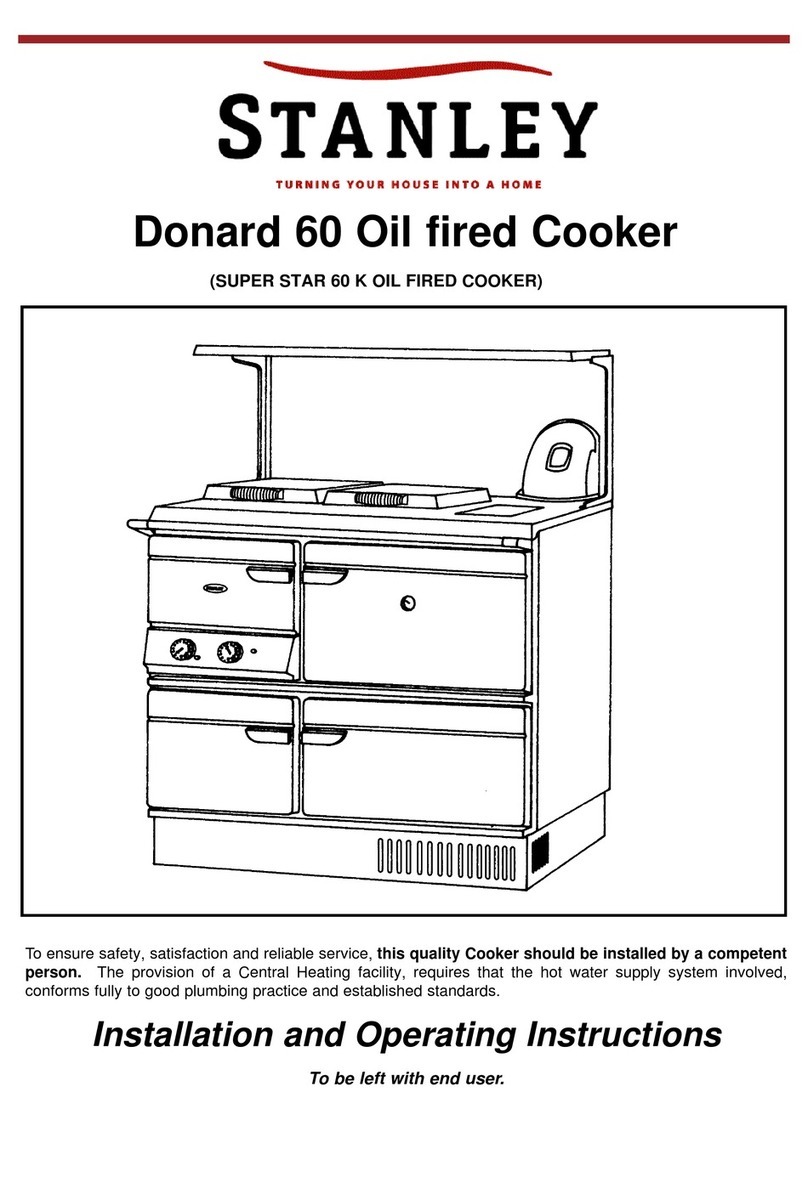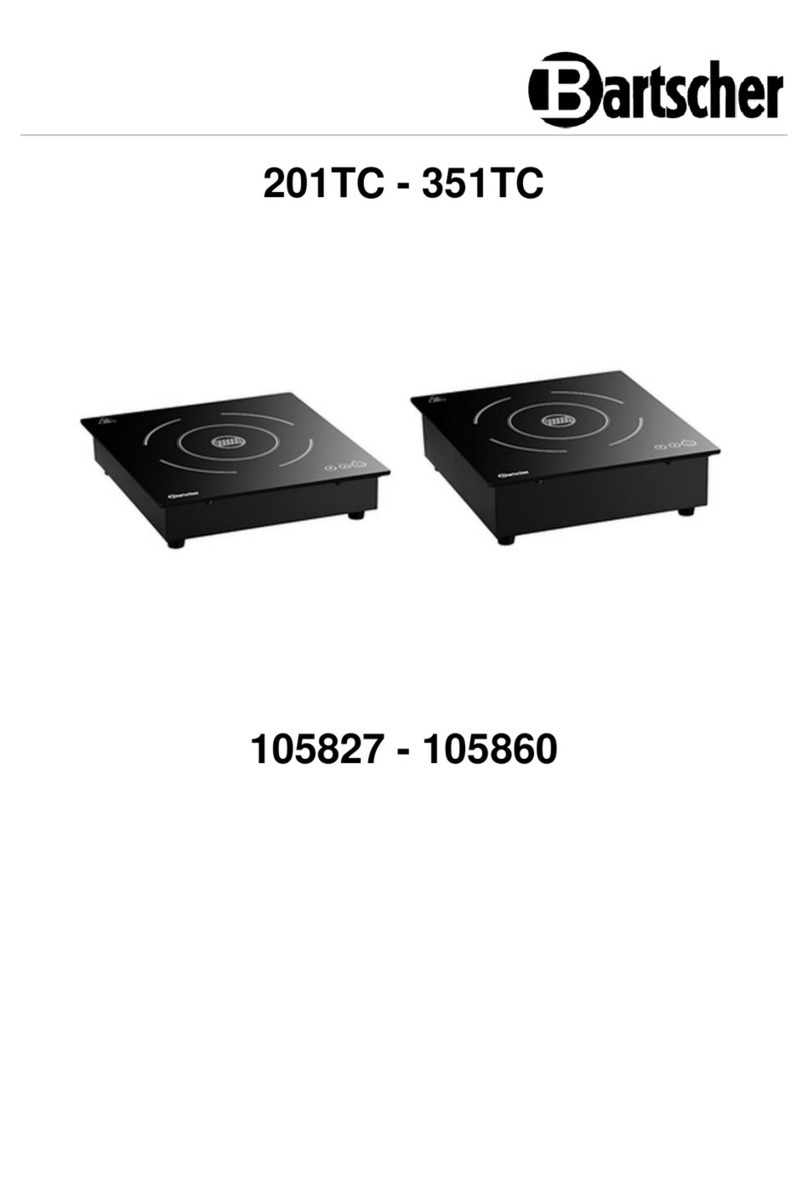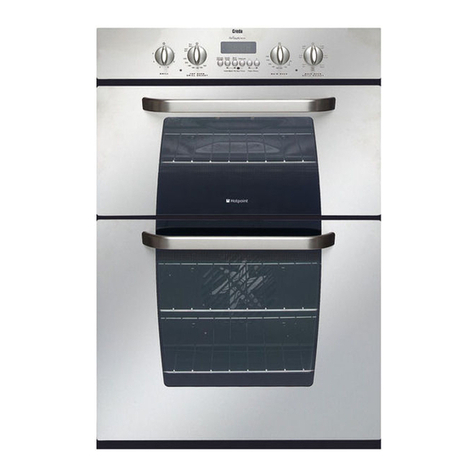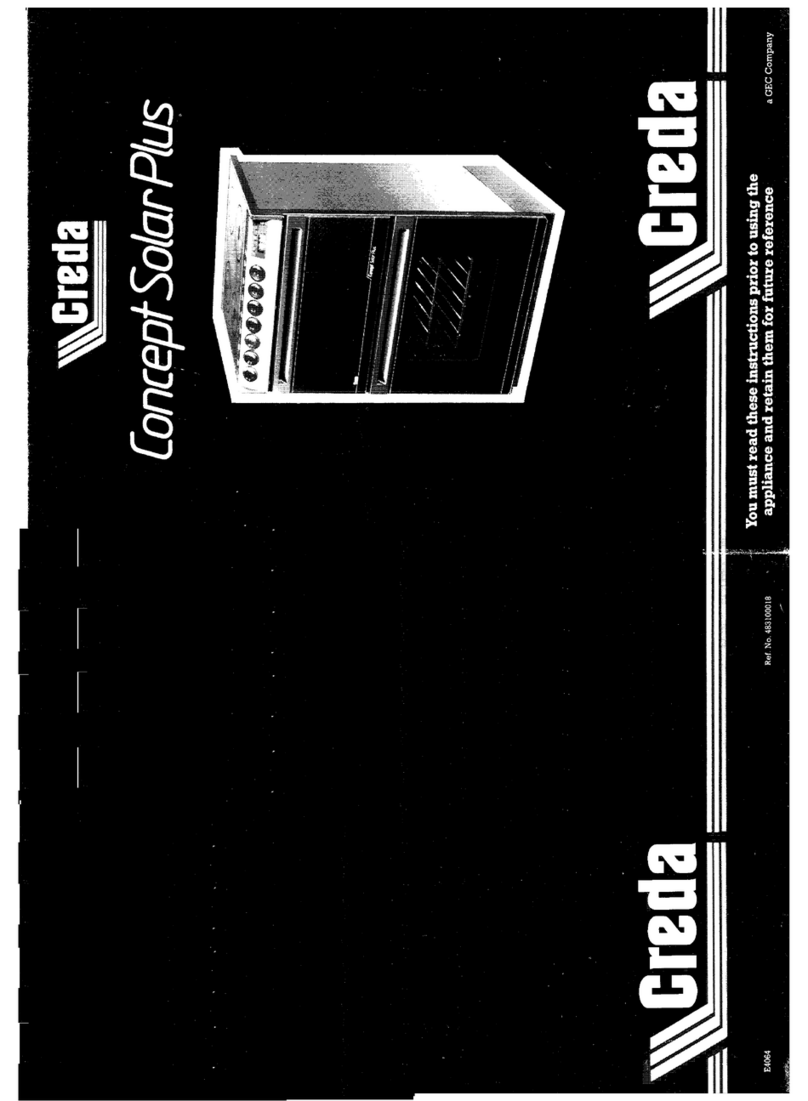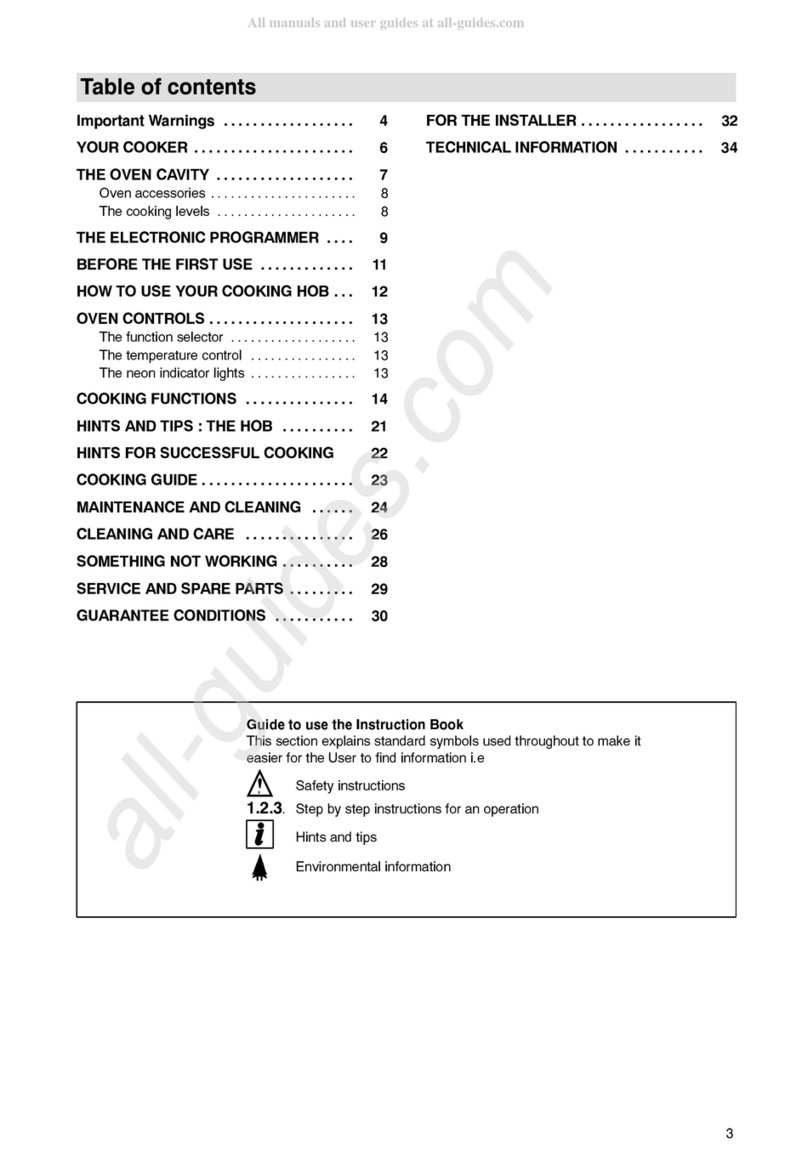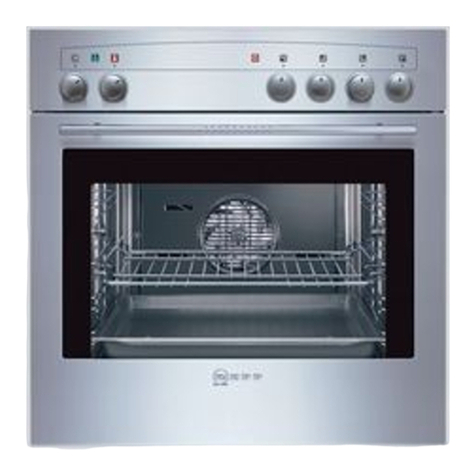
en-us Cleaning and maintenance
10
Requirements
¡The cooktop has cooled off.
¡Exception: Remove dry sugar, sugar syrup, milk and
tomato products immediately.
→
"Cleaning recommendations", Page10
1. Wipe off splatters with a clean, damp sponge or a paper
towel.
2. Rinse and dry.
3. If a smudge remains use white vinegar.
4. Rinse and dry again.
5. Apply a small amount of cooktop cleaner with a clean
paper towel or cloth and let it dry.
6. Buff the surface with a clean paper towel or cloth.
7.3 Cleaning recommendations
Follow these cleaning instructions for removing common
soiling.
WARNING
The blade of the glass scraper is extremely sharp. You
can cut yourself.
▶Replace the blade immediately, when you see any im-
perfections.
▶Follow the manufacturer's instructions.
NOTICE:
Diamond rings may scratch the ceramic cooktop surface.
▶Take off any rings before you clean the ceramic cooktop
surface.
Type of soil Recommendation
¡Dry sugar
¡Sugar syrup
¡Milk
¡Tomato spills
¡Melted plastic film
or foil
REMOVE IMMEDIATELY. Failure
to remove these substances im-
mediately can permanently dam-
age the ceramic cooktop surface.
Remove the soil with the glass
scraper while the cooktop surface
is still hot.
Use a new, sharp razor in the
glass scraper.
¡Remove the cookware and
turn off the cooking zone.
¡Put on an oven mitt.
¡Hold the glass scraper at 30°
angle and scrape off the soil.
Be careful not to gouge or
scratch the glass ceramic sur-
face.
¡Push the soil off the heated
area.
¡Let the surface cool.
¡Remove the residue and apply
glass ceramic cooktop cleaner.
1These marks are registered trademarks of their respec-
tive owners. All other trademarks are trademarks of
BSH Home Appliances Corporation or its affiliated
companies.
Type of soil Recommendation
¡Burned-on food
soil
¡Dark streaks
¡Dark specks
¡Lay a damp paper towel or
sponge on top of the soil for
30minutes to soften the soil.
¡Remove the soil with a plastic
scrubber and glass ceramic
cooktop cleaner or with the
glass scraper.
¡Rinse the cooktop surface and
dry it.
Greasy spatters ¡Remove grease with a soapy
sponge or cloth.
¡Rinse the cooktop surface
thoroughly and dry it.
¡Apply glass ceramic cooktop
cleaner.
Metal marks: irides-
cent stain Pans with aluminum, copper or
stainless steel bases may leave
marks.
Treat metal marks immediately
after the cooktop surface has
cooled off. Failure to do so
makes removal very difficult.
¡Clean the cooktop surface with
glass ceramic cooktop cleaner.
¡If this does not remove the
marks, clean the cooktop sur-
face with a damp paper towel
and a mild abrasive (Bon
Ami®1, Soft Scrub®1 without
bleach).
¡Rinse the cooktop surface and
apply glass ceramic cooktop
cleaner.
Hard water spots Hot cooking liquids may drip or
spill on the cooktop surface. The
minerals in some water can be
transferred onto the surface and
cause stains.
Remove boilovers and stains be-
fore using the cooktop again.
¡Clean the cooktop surface with
undiluted white vinegar.
¡Rinse the cooktop surface and
dry it.
¡Apply glass ceramic cooktop
cleaner.
Surface scratches Small scratches are common and
do not affect cooking. They be-
come smoother and less notice-
able with daily use of the glass
ceramic cooktop cleaner.
¡Apply glass ceramic cooktop
cleaner before cooking to re-
move sand-like grains and grit
such as salt and seasoning.
¡Scratches can be reduced by
using pans with bases that are
smooth, clean, and dry before
use. Use recommended glass
ceramic cooktop cleaner daily.
1These marks are registered trademarks of their respec-
tive owners. All other trademarks are trademarks of
BSH Home Appliances Corporation or its affiliated
companies.


